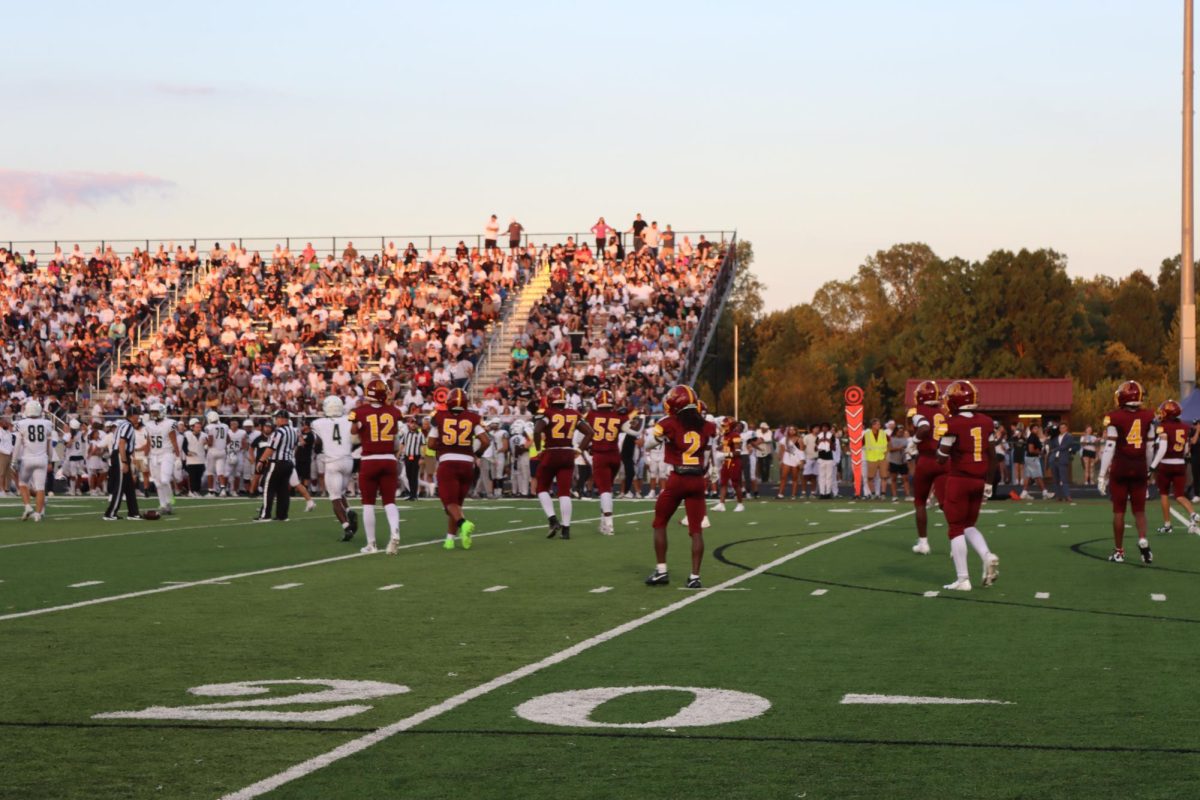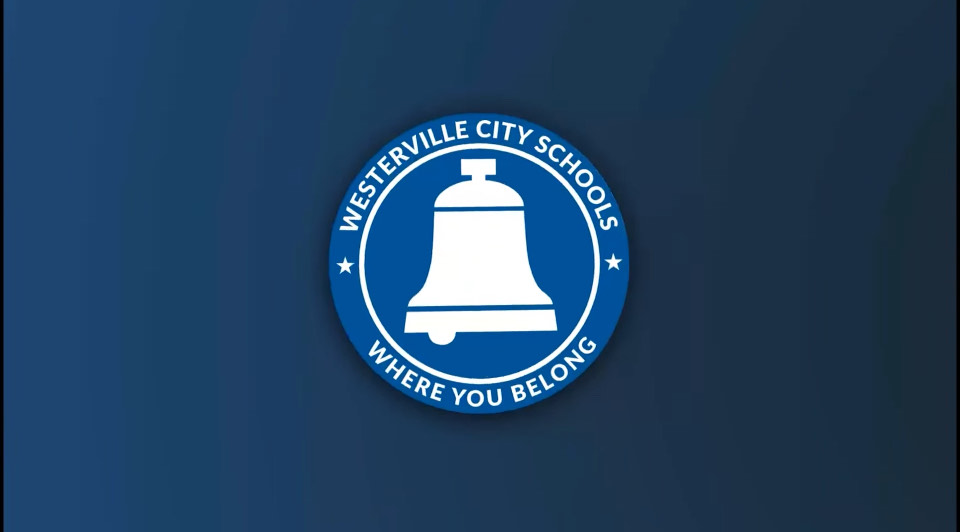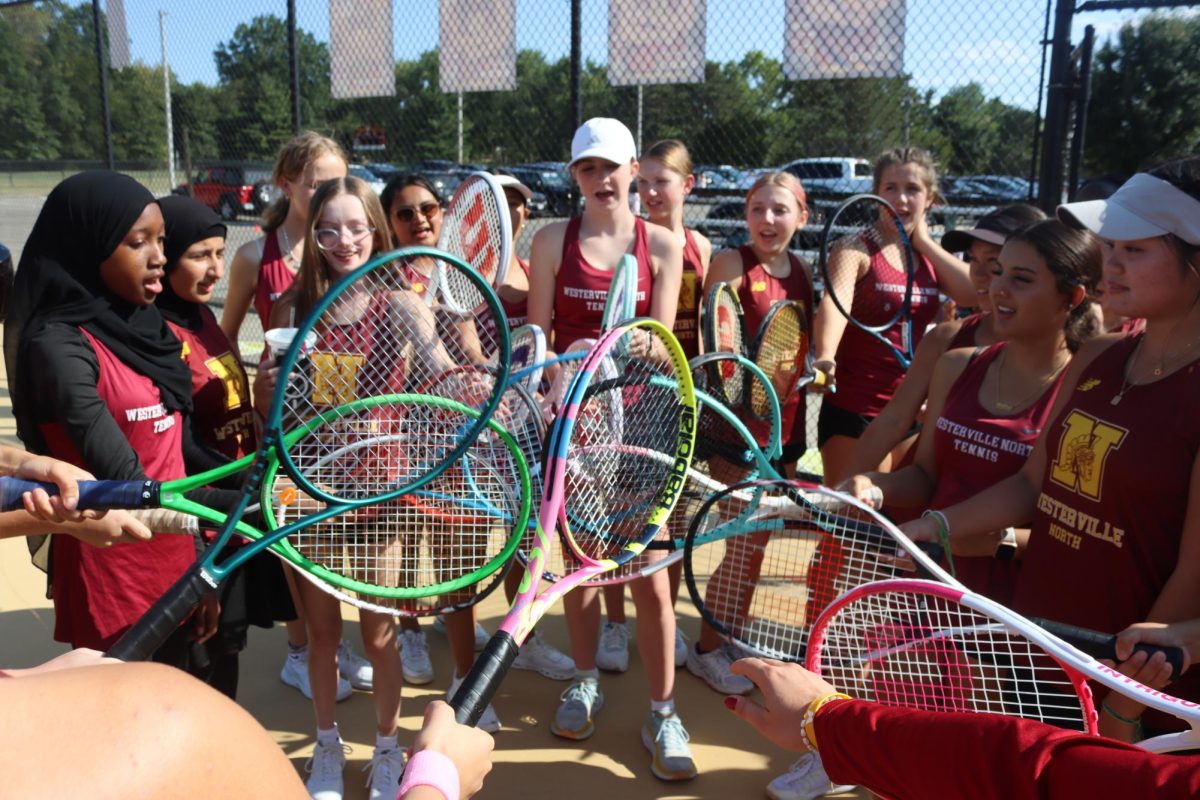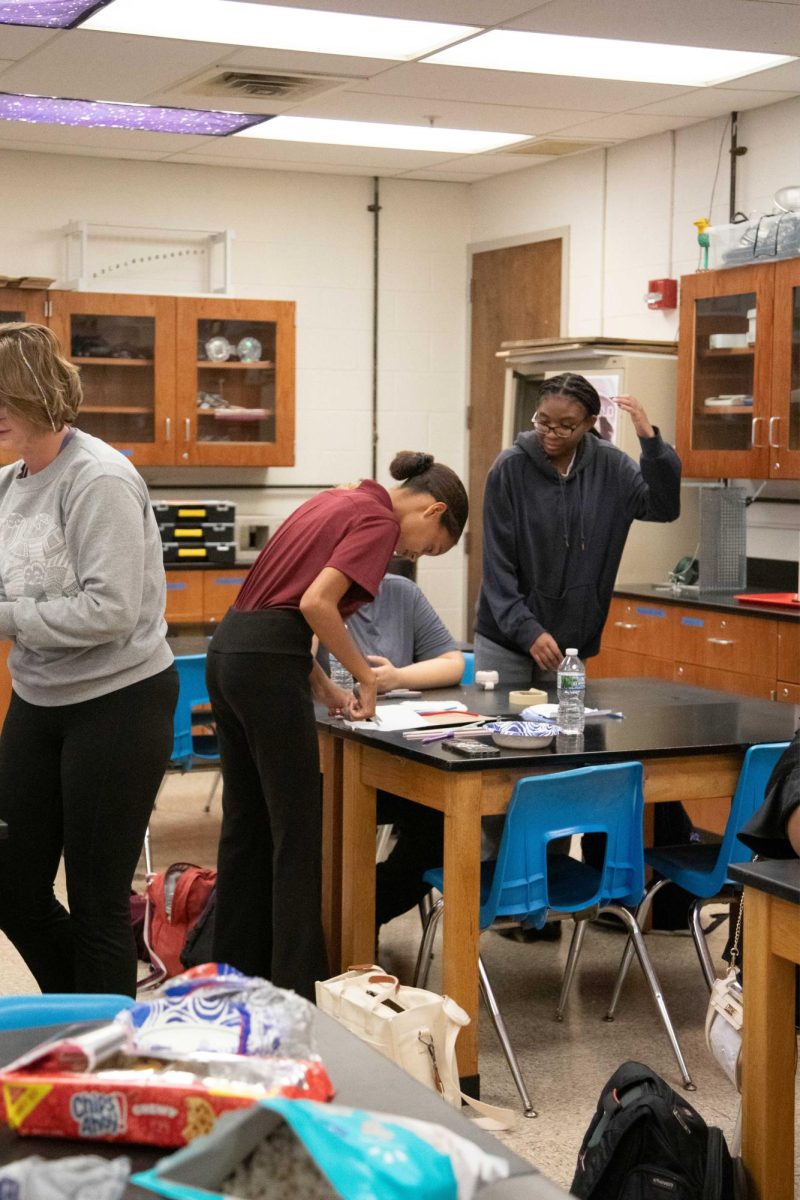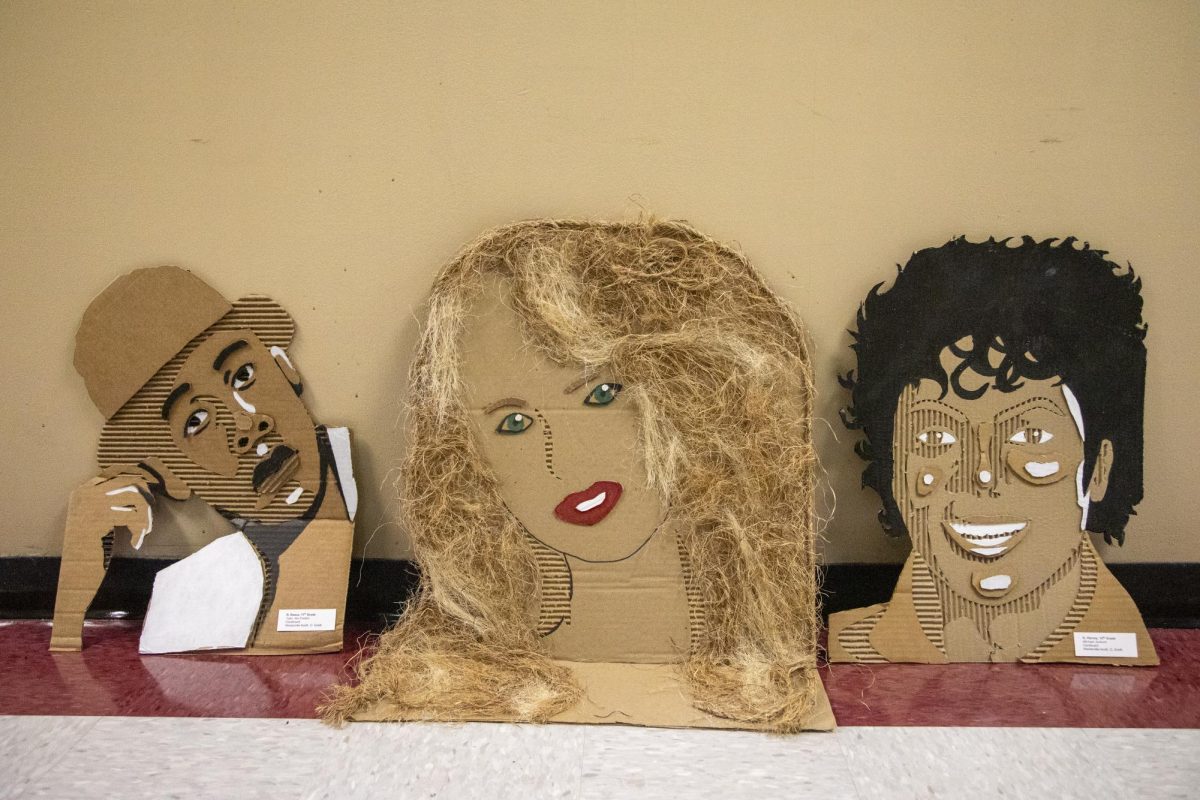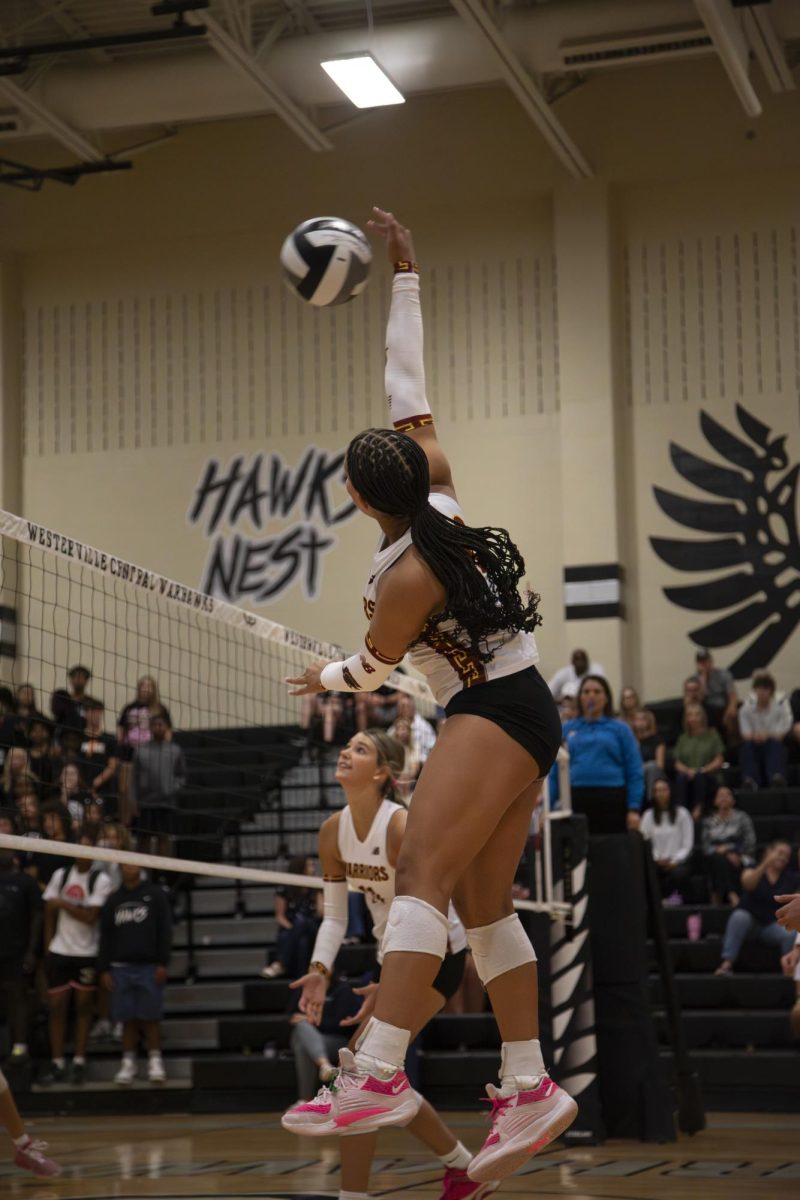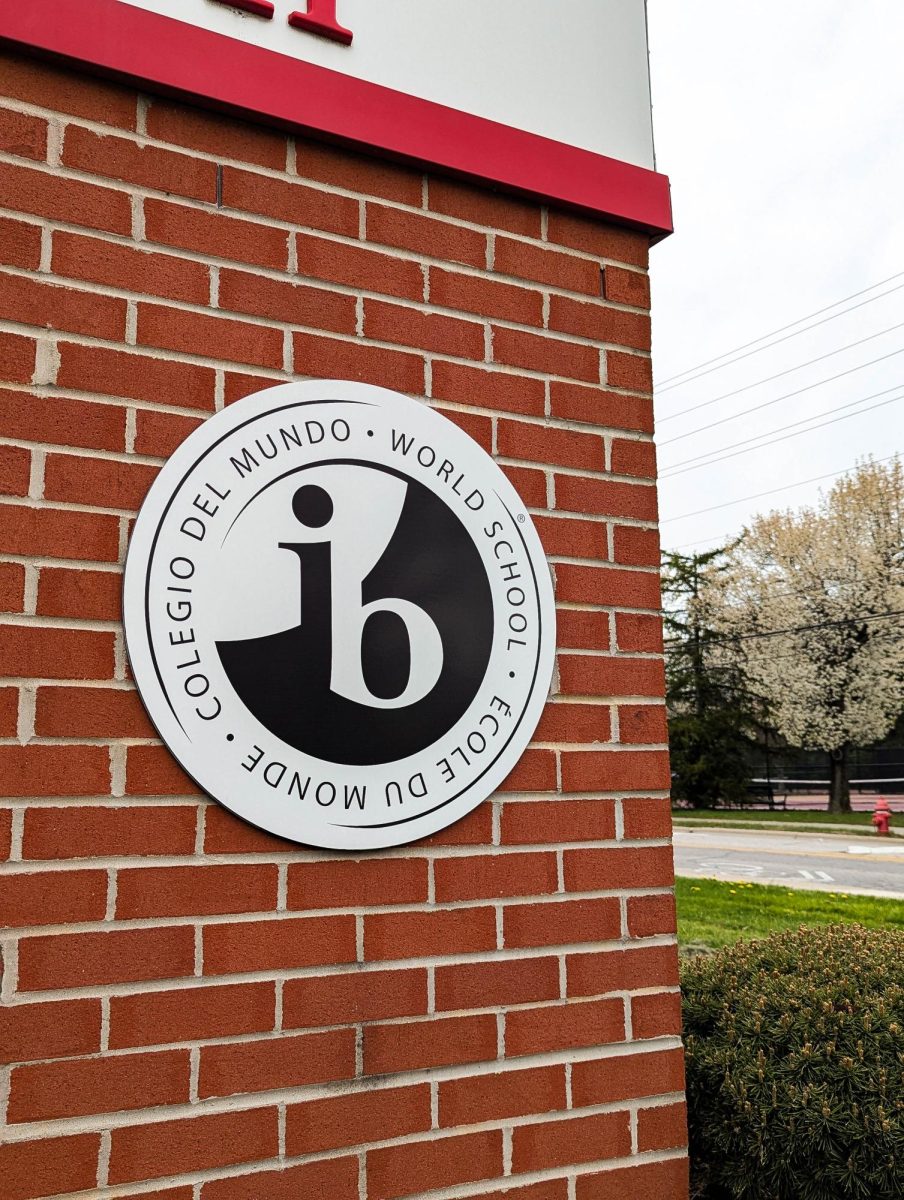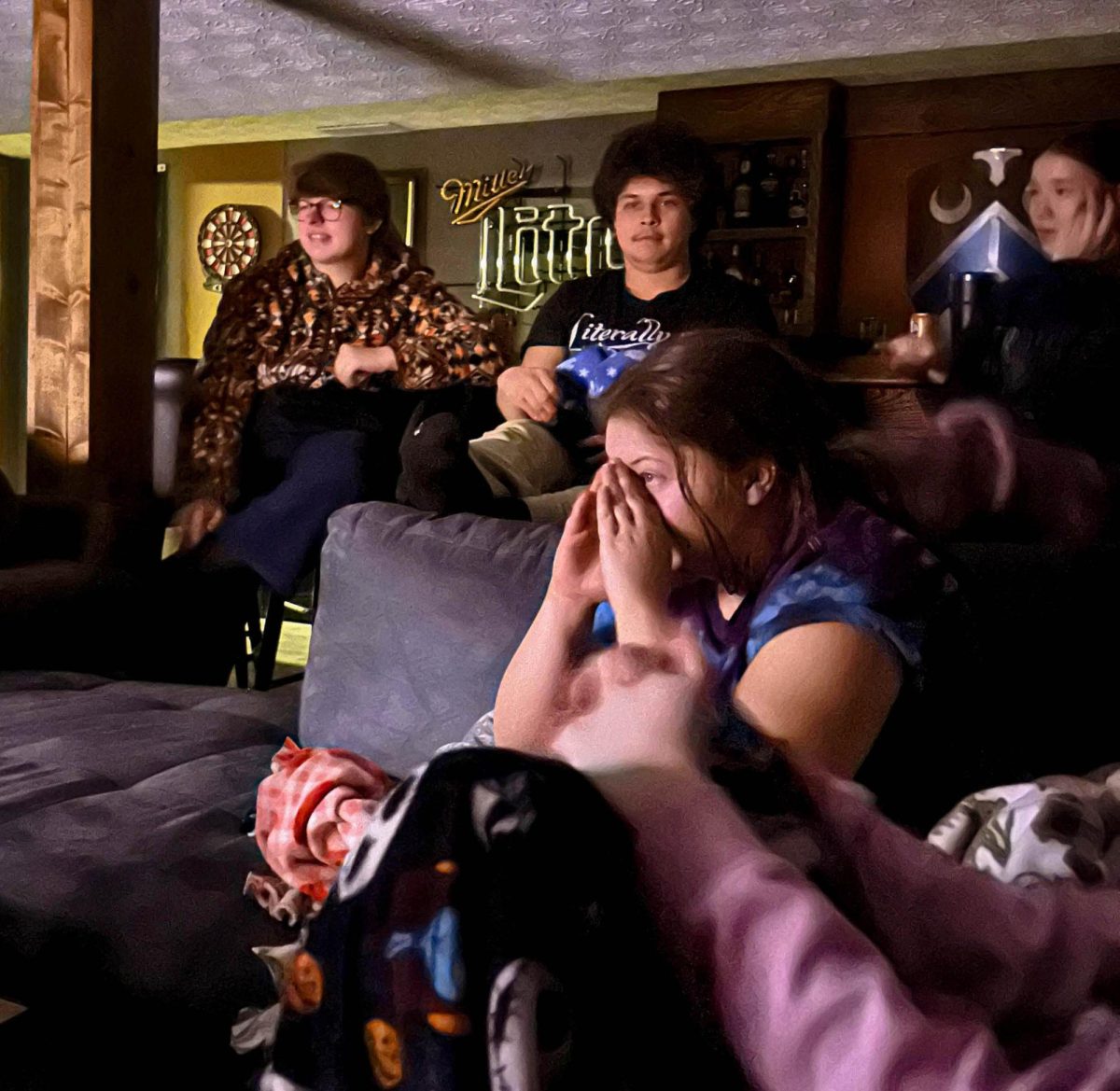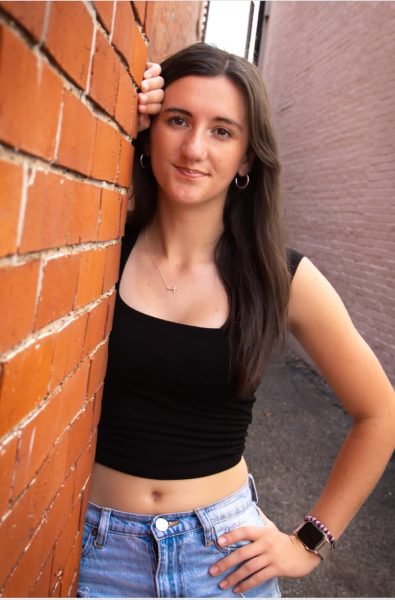Using straws, pipe cleaners, paper, tape, scissors, foam, and cardboard, girls at the SWENext (Society of Women Engineers) meeting were tasked with creating the slowest bobsled possible. The challenge was that the bright orange track that the bobsled would be traveling down was practically vertical. The winning group used a sail on their bobsled as wind resistance to slow it down.
Jeanette Moriak (2026) is a co-leader of SWENext at Westerville North. Moriak is planning on studying architectural engineering, as she tends to be drawn into math and science subjects, saying “finding a solution to a problem is very intriguing to me.”
Moriak started going to SWENext as a freshman. Moriak said, “It can be hard being a woman in STEM and engineering.” But having the support from SWENext was helpful as an underclassman. And by the time she was a junior, she asked to lead the club.
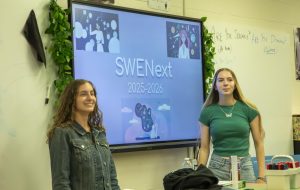
The other co-leader of SWENext is Lavender Ehleringer (2026), who also got involved in her freshman year. Ehleringer says she likes to “analyze things and develop solutions to problems” and plans to major in chemical engineering in college. She became one of the co-leaders after being one of the only people to show up to SWENext meetings consistently.
Ehleringer says she enjoys SWENext because it gives girls in engineering “a safe place to just do what we love.” She also says “ I have gained a sense of confidence in myself” as well as feeling like she has gained a community of girls with similar interests to hers.
Laura Ferguson, engineering teacher, became the SWENext advisor when two, now graduated Westerville North students, “basically begged [her] to be the advisor”.
While she has her teaching license in math and physics as well as a bachelor’s degree in physics, Ferguson says, “Had my school had an engineering pathway or a club like this, maybe I would have ended up being an engineer.”
While she didn’t study engineering, Ferguson was asked to teach it after the district added an engineering pathway and each high school required a teacher. After hesitantly agreeing, Ferguson took a few summer courses on engineering. As the SWENext advisor, Ferguson wants members to know, “You’re not alone as a girl pursuing engineering.”

SWENext meets once a month in Ferguson’s room, 248. During these meetings, members will encounter a variety of activities. Moriak said SWENext is going to have guest speakers, design challenges, and hopefully make T-shirts again at the end of the year. The guest speakers include professional female engineers as a way to give the girls examples of women who are successfully working in the field as well as allowing them to get advice and ask questions, according to Ferguson.
One of the favorite activities is T-shirt making, where the members come together to create a design, cut the design on vinyl, and heat press it onto the t-shirt in The [engineering] Shop. The Shop, room 267, is a colorful multiroom design center in the back of the school that has computers, vinyl cutters, laser engravers, power tools for cutting wood, and 3D printers.
Ferguson says having this club is, “A different environment where we can just kind of have more fun with it, not to worry about grades.”
Moriak and Ehleringer are looking to continue to grow their group. “We’ve had pretty good growth…has been really cool to see,” Ferguson says.
One of the purposes of SWENext is to offer community to girls who might feel like an outlier in their field of interest.
Another big goal is to visit the middle schools in Westerville in hopes to recruit potential members. SWENext would take a group of girls to schools in the district to get girls more interested in taking engineering classes, Ehleringer says. They have hopes to do a design challenge and talk to them about the engineering pathway at the high school level.
The worldwide SWE organization was started in 1950. Their core values include integrity, professional excellence, and trust, with a mission to empower women to reach their full potential as engineers.
SWENext is a program and club for girls under 18 or pre-college students who are interested in engineering and want to connect to fellow women in the engineering world. According to SWE, there are over 200 SWENext clubs around the world.
Moriak says she wants members to know that there’s people supporting them and that it is possible to “Be successful as a woman in STEM. There’s no harm in [participating]. It’s a lot of fun.”
“I hope that they gain a sense of security, that they know they aren’t alone,” Ehleringer says. “Just try it. [I’m] 99% sure that [you]’ll have a great time.”



